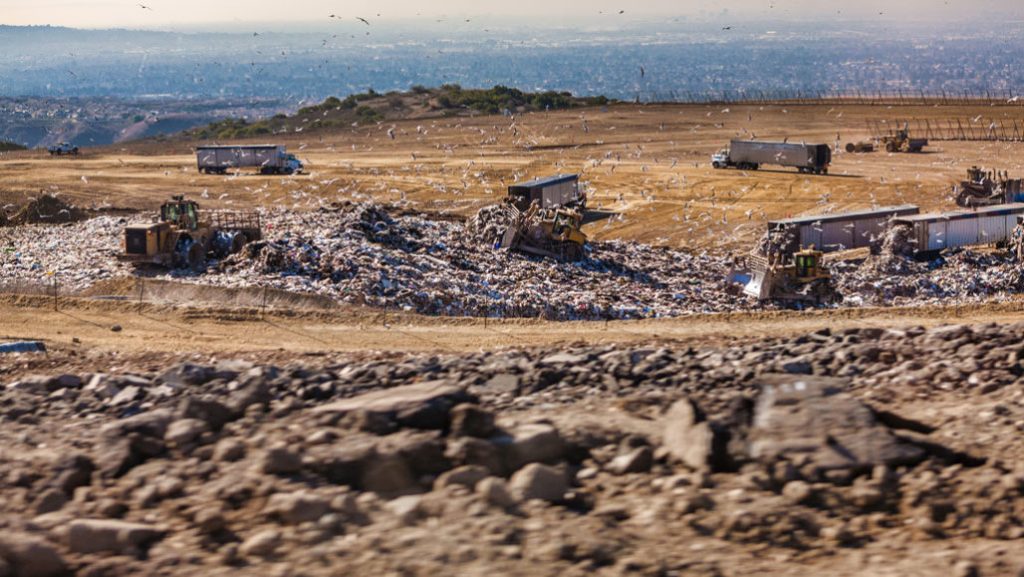Affordable prices with no hidden fees
Friendly team members
Fast delivery and pickup
Satisfied customers
Call (657) 425-0756 Now
A landfill is a location where garbage can be dug up and buried (or dumped on land). It is part of the process of managing solid waste, which makes it the oldest way to treat trash. The two main types of landfills are those for sanitary waste and those for dangerous waste. Sanitary landfills are places where trash that isn’t harmful or dangerous is thrown away. As hazardous waste, it is disposed of in landfills.
Different kinds of landfill
Sanitary landfill
Sanitary landfills keep junk away from the environment until it is safe to do so. It is safe when it has lost all of its biological, chemical, and physical properties. Sanitary landfills use technologies to keep junk in place and stop potentially dangerous compounds from leaching out. The two main ways that sanitary landfills get rid of junk are the trench method and the area method.
Landfills for waste from cities and towns (Msw)
People take their junk to this kind of dump, which is regulated by the state and local governments. The Environmental Protection Agency (EPA) has made sure that these landfills follow a set of basic rules. Some things might not be allowed in landfills for solid waste from cities and towns. Some of the most common things that can’t be put in MSW are paints, cleaners, chemicals, motor oil, batteries, and pesticides. But there are some things around the house that can be turned into waste and thrown away.
Landfills for construction and demolition debris
These dumps are used to store waste from building, fixing up, and tearing down buildings and bridges. Concrete, wood, asphalt, gypsum (the main ingredient in drywall), metals, bricks, glass, plastics, trees, stumps, dirt, rocks, and building materials are all types of debris (as are doors, windows, and plumbing fixtures).
Places to put industrial junk
Industrial waste that isn’t dangerous comes from things like manufacturing and other industrial activities.

Certain landfills in California
Acme Landfill
The company is involved in recycling, reducing carbon emissions by switching from diesel trucks to trucks that run on compressed natural gas, supporting composting, and other community projects that help protect the environment, promote sustainability, and teach people. Construction and demolition waste, clean soil, municipal solid waste, wood, white goods and bulky waste, and yard waste can all be taken there.
Bass Hill Landfill
The Bass Hill Landfill is in the Johnstonville Area on Hwy. 395 in Susanville, CA, 96130. Construction and demolition waste, municipal solid waste, ash, tyres (auto), white goods and bulky waste, and yard waste are all things they will take.
Altamont Landfill and Resource Recovery Facility
The Altamont Landfill and Resource Recovery Facility, which is at 10840 Altamont Pass Rd., Livermore, CA 94551, has been named a TSDF by the Environmental Protection Agency.
Why do we need landfills?
The main reason for a landfill is to get rid of junk that can’t be recycled or reused. As the population grows and people keep acting the way they do now, this waste is likely to get worse.
Even though recycling rates are getting better, there is still general waste that needs to be dealt with in a safe and effective way.
How do these landfills hurt the environment?
These dumps have been a major source of pollution from many different places. First of all, there will be a lot of runoff from the landfill itself, and there is a lot of open land and water out here. The runoff will end up in streams, which will carry it to the wetlands, where it will pollute them.
Second, the garbage in the landfill will give off a lot of methane gas, which will make the air quality much worse. Methane is a gas that warms the air. It is the same material that we use in our stoves. Because greenhouse gases keep heat in the air, we are slowly warming the planet and changing the weather. Methane can also break down into carbon dioxide, which we already have a lot of and don’t need more of.
Third, the dump will have leaks. Over time, the waste in a landfill will pack together and leave spaces for air. That air will have plastics and other things that are bad for the environment. When that air is let out, it will contain chemicals and toxic gases that are bad for the air. When you add them all up, it’s pretty clear that landfills are a big problem for the environment.
How can these waste landfills be fixed?
It’s not hard to get rid of junk piles. We only have to do something easy or something that has been done everywhere. We can keep the garbage dumps safe if we build four walls around them. Then we can make a natural park with beautiful views and a road so people can get there. This will turn the trash dumps into a park with lots of nature. I think it would be a great idea to stop those landfills from getting worse.
The management and regulation of landfills in California, particularly in the context of Dumpster HQ Santa Ana, play a crucial role in ensuring environmental sustainability and public health. The analysis of landfills’ impact on air and water quality, as well as their potential to contribute to greenhouse gas emissions, underscores the need for vigilant monitoring and implementation of best practices.
Affordable prices with no hidden fees
Friendly team members
Fast delivery and pickup
Satisfied customers
Call (657) 425-0756 Now
